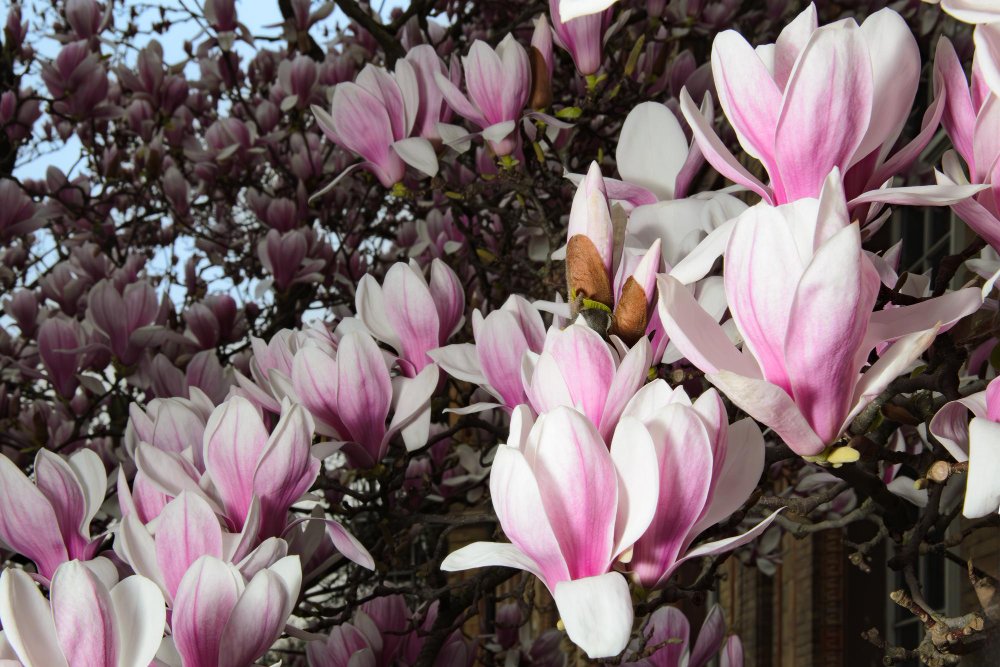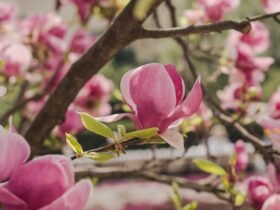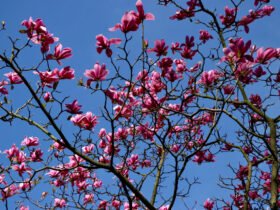Magnolia trees, with their large, fragrant blooms and timeless beauty, have captivated human imagination for centuries. Beyond their aesthetic appeal, magnolias hold significant cultural, symbolic, and mythological importance in various traditions around the world. This article delves into the rich tapestry of myths, traditions, and cultural significance associated with magnolias, revealing their profound impact on human history and culture.
Ancient Origins and Symbolism
Magnolias are among the oldest flowering plants on Earth, with fossil records dating back over 100 million years. Their ancient origins have imbued them with a sense of mystery and reverence in various cultures:
- Timeless Beauty: The magnolia’s ancient lineage symbolizes endurance and longevity. In many cultures, magnolias represent the strength and resilience of nature, enduring through millennia of change.
- Purity and Nobility: The pristine white blooms of many magnolia species are often associated with purity and nobility. In Victorian England, magnolias were frequently used in bridal bouquets to signify the bride’s purity and dignity.
Magnolias in Eastern Traditions
Magnolias hold a special place in Eastern cultures, particularly in China and Japan, where they are celebrated for their beauty and symbolic meanings:
- Chinese Culture: In China, magnolias symbolize purity and feminine sweetness. They are often depicted in traditional Chinese art and literature, embodying the ideal of womanly beauty and gentleness. Magnolias are also associated with nobility and dignity, often planted in imperial gardens and temples.
- Japanese Culture: In Japan, magnolias (known as “mokuren”) are admired for their elegant blossoms and delicate fragrance. They are seen as symbols of the arrival of spring and renewal. Magnolias are also used in traditional Japanese medicine for their purported healing properties, particularly in treating respiratory ailments.
Magnolias in Western Traditions
In Western cultures, magnolias have been woven into myths, literature, and social customs, symbolizing a range of themes from beauty to perseverance:
- Greek Mythology: Although not directly mentioned in ancient Greek mythology, the magnolia’s grandeur and beauty align well with the floral symbols of love and beauty associated with goddesses like Aphrodite. Modern interpretations sometimes link magnolias to stories of transformation and rebirth, akin to the tales of metamorphosis in Greek myths.
- American South: In the Southern United States, magnolias are iconic symbols of the region’s cultural and natural heritage. The Southern Magnolia (Magnolia grandiflora) represents hospitality, strength, and stability. Its large, glossy leaves and fragrant white flowers are a staple in Southern gardens and a motif in Southern literature and folklore.
Magnolia in Literature and Art
Magnolias have inspired countless works of literature and art, where they often symbolize beauty, mystery, and the natural world’s delicate balance:
- Literature: Authors have used magnolias to evoke sensory imagery and thematic depth. In Harper Lee’s “To Kill a Mockingbird,” magnolias enhance the Southern setting, symbolizing both beauty and the complexities of social change.
- Art: Magnolias are a popular subject in visual arts, from traditional Chinese ink paintings to contemporary Western art. Their striking form and colors provide a rich source of inspiration for artists seeking to capture nature’s elegance and power.
Medicinal and Practical Uses
Beyond their symbolic meanings, magnolias have practical uses that have been valued in various cultures:
- Traditional Medicine: In Chinese and Japanese medicine, magnolia bark (known as houpo in Chinese) has been used for centuries to treat ailments such as anxiety, asthma, and digestive issues. The bark contains compounds with anti-inflammatory and anti-anxiety properties.
- Culinary Uses: In some cultures, magnolia petals are used in cooking, adding a unique flavor to dishes and teas. Magnolia grandiflora petals, for example, are sometimes pickled or used to flavor syrups.
Conclusion
Magnolia trees are far more than just beautiful additions to our gardens; they are deeply embedded in the cultural and symbolic fabric of societies around the world. From their ancient origins and representation of purity and resilience to their role in Eastern and Western traditions, magnolias continue to inspire and captivate. Understanding the cultural significance of magnolias enriches our appreciation of these magnificent trees and highlights their enduring influence on human culture and tradition.







